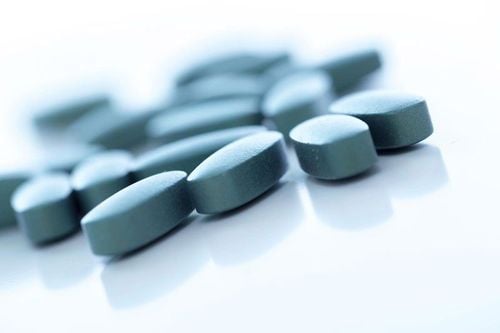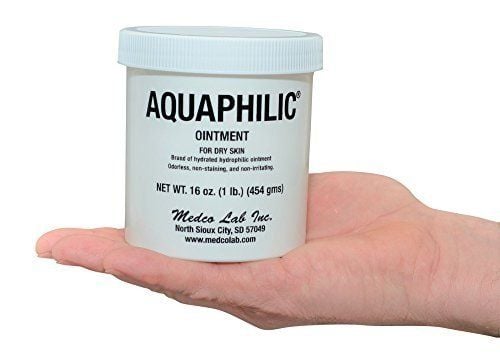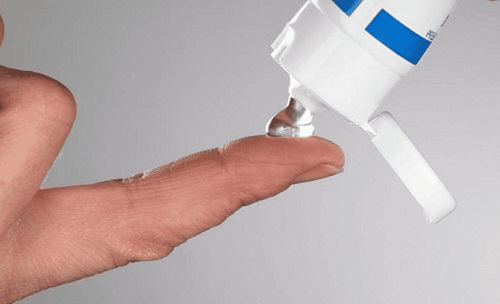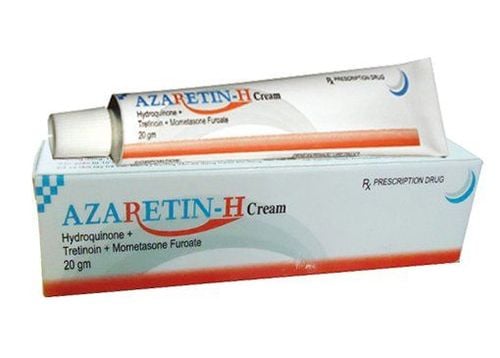This is an automatically translated article.
The article was professionally consulted with Specialist Doctor I Nguyen Thanh Van - Doctor of Internal Medicine - Dermatology - Department of Medical Examination & Internal Medicine - Vinmec Phu Quoc International General Hospital.Melanin is considered as the main cause of spots and dark spots on the skin. When the amount of melanin is overproduced by factors such as direct sun exposure, hormonal changes or aging, it causes a number of conditions related to skin pigmentation such as: Hyperpigmentation, hypopigmentation and loss of pigmentation.
1. What is skin pigmentation?
Pigment gives the color of the skin, hair, mucous membranes and retina of the eye. Pigmentation is caused by the deposition of the pigment melanin. Melanin is produced by melanocytes. Some conditions associated with skin pigmentation include: Hyperpigmentation (too much pigmentation), hypopigmentation (too little pigment) and hypopigmentation (loss of pigmentation).Skin has a natural color independent of the sun and this is the pigment of the skin. Furthermore, skin color depends on the pigment melanin, which provides the skin's natural protection against the effects of UV rays. Melanin pigment is divided into two types:
Eumelanin: This type of pigment is better known as true melanin, it is black or dark brown in color and is found in people with dull, translucent skin (it works). protect skin from UV rays). Phaeomelanin: This type of pigment is also known as red melanin. It usually appears in people with fair skin or red hair. It has no protective effect against UV rays. On the contrary, the synthesis of this type of pigment will generate free radicals that attack the skin. These two types of melanin pigment are usually present in each person. However, for each individual, the rate will be different. The amount of these two types of pigments will determine the natural skin color, as well as the tan of the skin when exposed to the sun.
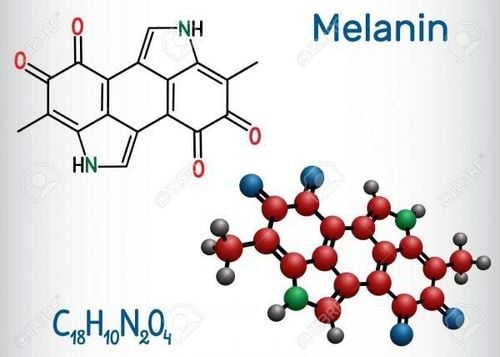
Hai loại sắc tố melanin sẽ quyết định màu da tự nhiên của mỗi người
2. The activity of skin pigmentation
Skin pigmentation is the result of an active process with 4 complex stages:Stage 1: Ultraviolet rays and biological mediators (substances found in skin cells) stimulate the process of skin pigmentation. pigment. Stage 2: Melanin is produced by melanocytes. Stage 3: Then, Melanin is brought to the skin epidermis. Stage 4: Finally, the melanin pigment moves to the surface of the skin through the constant renewal of cells in the epidermis.
3. What causes dark spots on the skin?
A person's skin color is often determined by their genetic makeup as well as by how much their skin is exposed to the sun. Areas of skin that are regularly exposed to direct sunlight will appear darker than areas of skin that are shielded. Melanin is a natural pigment that controls skin color and it is secreted by the body to protect the skin from UV rays - which can lead to darkening, pigmentation or skin pigmentation disorders.Pigmentation problems have been shown to be related to underactive melanin function. Therefore, it will cause skin changes including: hyperpigmentation (dark spots) or hypopigmentation (light spots) on the skin. This type of hypopigmentation (light spot) is often associated with a medical condition such as vitiligo or albinism. These diseases all require medical attention.

Bệnh bạch tạng làm cho chức năng của melanin hoạt động kém
4. Some factors related to dark spots on the skin of the face
4.1. Dark spots associated with sun and age
UV rays can penetrate the skin's epidermis and stimulate skin pigment cells (melanocytes). Once there, some melanocytes are continuously broken down and begin to secrete large amounts of melanin. Spots appear on the facial skin when melanin production is abnormally increased and the overproduced amount of melanin is evenly distributed over the skin's surface. Therefore, this causes melanin pigment to accumulate to a certain amount and form brown spots on the skin.Excessive sun exposure (too strong or too long) for a long time, will cause an overproduction of melanin. When that, will cause the appearance of pigment spots or moles (small, round and flat spots of different sizes). This is precisely the reason why people who work outdoors (those in the marine industry, construction workers, etc.) tend to develop these dark spots on their skin earlier than those who do. other jobs.

Tia cực tím làm gia tăng sự sản xuất của melanin gây nên đốm đen trên da
4.2. Dark spots linked to hormonal changes and oral contraceptive use
Hormonal changes during pregnancy or when taking birth control pills can also cause hyperpigmentation.In women with brown hair (with dull, translucent skin), hormonal changes can lead to the appearance of brown patches of skin on the face called "melasma" or "mask of pregnancy". These dark patches will appear more pronounced in the summer. At the same time, their color changes and becomes darker when directly affected by the ultraviolet radiation of the sun.
This pigmentation change comes on suddenly and is common in pregnant women but it should decrease or disappear completely after childbirth. At this point, hormonal hormones have regained balance and are back to normal (for example, after childbirth). However, there may still be some residual pigment that may persist for several months or years.
In certain cases, the Muslim “mask of pregnancy” sometimes appears even when a person is not pregnant or taking birth control pills.
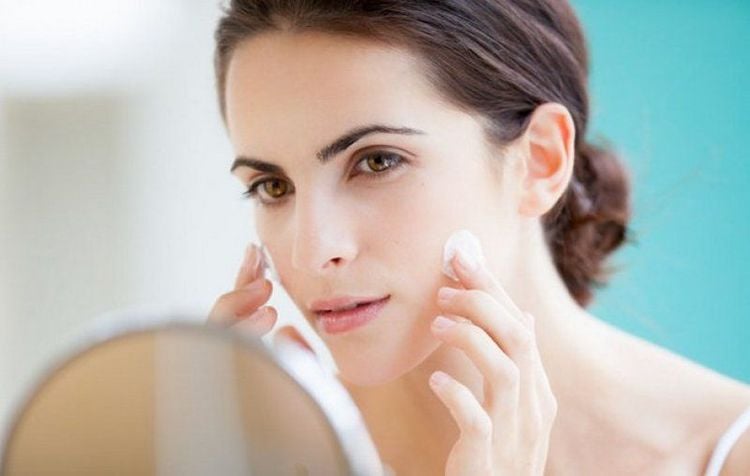
Phụ nữ mang thai thường dễ bị đốm đen trên mặt do thay đổi nội tiết tố
4.3. Black spots are associated with toxic substances and skin damage
When skin is exposed to the sun, a number of factors, such as perfumes and medications, can cause brown spots to appear by photochemical reactions.Furthermore, damaged or scarred skin (as a result of burns, sunburn, inflammatory processes, especially from acne) is more likely to develop pigmentation if exposed to UV light.
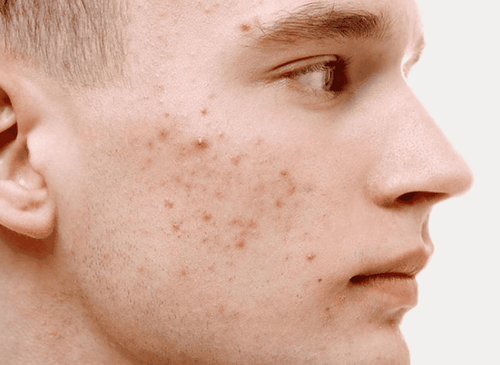
Mụn trứng cá khi tiếp xúc với tia tử ngoại UV sẽ dễ làm xuất hiện đốm đen trên da mặt
5. Some remedies for dark spots on the skin
Some measures should be applied to reduce brown spots on the skin:5.1. Daily routine
Protect skin from the sun to prevent melasma from appearing or getting worse. Furthermore, avoid the most dangerous sun between 10am and 3pm. Choose sunscreen carefully. Its sun protection factor (SPF) should be at least 20 (or 30 if you have fair skin). Take a sunscreen supplement before and during sun exposure to better prepare and help protect your skin from the effects of the sun.5.2. Facial cleansing
Use cleaning products that are suitable for skin with brown spots or discoloration.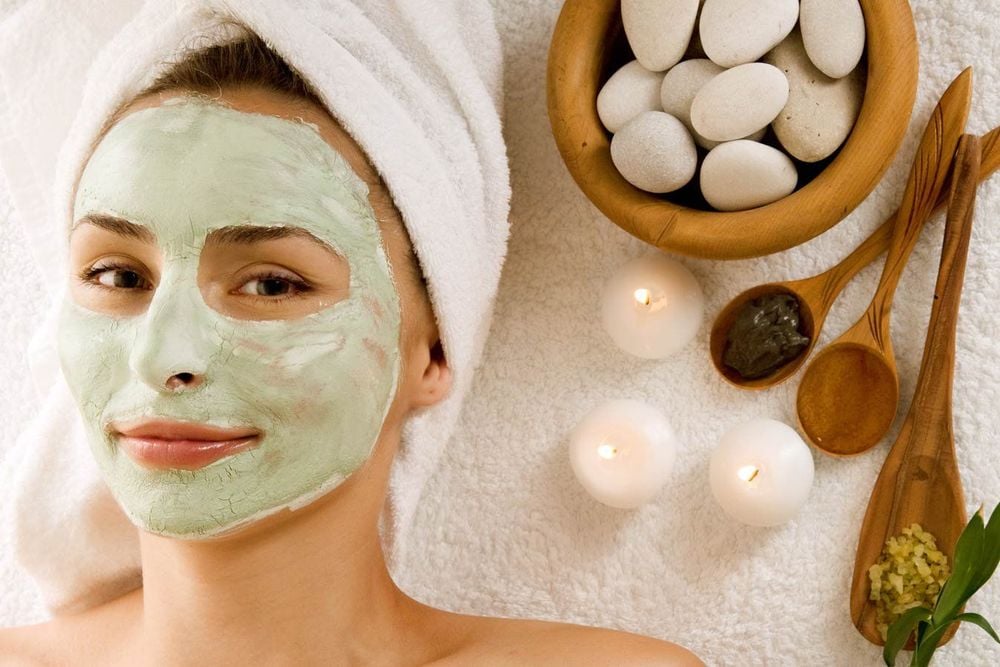
Các sản phẩm làm sạch da mặt giúp cải thiện đốm đen trên da
5.3. Skin Care
Sunscreen products help protect the skin from damage by ultraviolet rays. However, if not used correctly and regularly, it can have an effect on the health of the skin. To help reduce these pigment spots and even out skin tone, in addition to using the right sunscreen, apply dark pigmentation treatment products as prescribed by your dermatologist.Vinmec International General Hospital with a system of modern facilities, medical equipment and a team of experts and doctors with many years of experience in medical examination and treatment, patients can rest assured to visit. examination and treatment at the Hospital.
Please dial HOTLINE for more information or register for an appointment HERE. Download MyVinmec app to make appointments faster and to manage your bookings easily.
Reference source: Bioderma.co.uk, medicinenet.com




